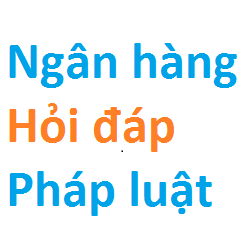After the distraint of assets, what is the settlement of assets in Vietnam?
 Bấm vào đây để xem bản dịch tiếng Việt của bài viết này
Click HERE to see the Vietnamese translation of this article
Bấm vào đây để xem bản dịch tiếng Việt của bài viết này
Click HERE to see the Vietnamese translation of this article
Enterprises are forced to distrain assets to enforce judgments. After completion, how is the process of assets coercive judgment enforcement resolved according to the provisions of the current Civil Judgment Enforcement Law?

After the distraint of assets, what is the settlement of assets in Vietnam? (Image from the Internet)
According to Clause 3, Article 71 of the Law on Enforcement of Civil Judgments 2008, distraint of assets is a measure to coerce judgment enforcement.
- After the distraint of assets, the civil judgment enforcement agency must determine the value of the distrained assets to fulfill the civil obligations of the judgment debtor. Determination of the value of distraint of assets can be carried out according to the agreement of the involved parties through a valuation organization or determined by the enforcer himself.
Pursuant to the provisions of Article 98 and Article 99 of the Law on Enforcement of Civil Judgments 2008, the valuation of distrained assets is conducted as follows:
+ Upon distraint of assets, if involved parties can reach agreement on prices of assets or valuation organizations, enforcers shall make written records of this agreement. Prices of assets agreed by involved parties shall serve as reserve prices for auction. In case involved parties reach agreement on valuation organizations, enforcers shall sign service contracts with these organizations.
+ In case the Involved parties cannot reach agreement on prices of assets and selection of valuation organizations, the valuation organizations selected by involved parties refuse to sign service contracts and the part of judgments or rulings is enforcedby the judgment enforcement agency, then the enforcers shall sign service contracts with valuation organizations in provinces or centrally run cities where distrained assets exist within 05 days.
- After evaluating the assets, handover of assets to the judgment enforcer in the following 2 cases (Pursuant to Article 100 and Article 104 of the Law on Civil Judgment Enforcement 2008):
+ In case involved parties reach agreement: the involved parties reach agreement to let judgment creditors receive assets distrained for clearing against sums of money receivable under judgment enforcement, enforcers shall make written records of such agreement within no more than 05 days. In case of more than one judgment creditor, the asset recipient shall obtain the consent of other judgment creditors and pay to the latter sums of money in proportion to the values they are entitled to.
+ In case of auction of assets: From the second price reduction onwards, if no one participates in the auction, bids, or the auction fails, the person to be executed has the right to receive the assets to deduct from the judgment amount. In case the person to be executed agrees to receive the asset to deduct from the amount to be executed, within 10 days from the date of receiving notice of no bidders, bidders or unsuccessful auction, then The enforcer notifies the person who must execute judgment. Within 30 days from the date the judgment debtor receives notice of the judgment debtor's agreement to receive the asset for judgment, if the judgment debtor fails to pay the full judgment amount and judgment costs to get the asset back. At auction, the enforcer will hand over the asset to the person being executed.
- Sale of distrained assets for judgment enforcement is applied in cases where the judgment creditor does not agree to receive the distrained assets. According to the provisions of Article 101 of the Law on Enforcement of Civil Judgments, depending on the case, distrained assets can be sold through auction procedures or without auction procedures.
Depending on the type of asset, whether it is movable or real estate, the enforcer will carry out different procedures for selling the asset and will be carried out in accordance with Article 101 of this Law.
- After being put up for auction, but it cannot be sold and the judgment enforcer does not agree to receive the assets for judgment enforcement, the distrained assets will be returned to the judgment debtor.
+ According to the provisions of Article 104 of the Law on Civil Judgment Enforcement 2008, in case the enforcer does not agree to receive the asset for execution, the enforcer will issue a decision to reduce the price of the asset to continue auctioning. If the value of the asset has been reduced to be equal to or lower than the enforcement costs but the judgment debtor still does not receive it to deduct from the judgment amount, the asset will be returned to the judgment debtor to manage and use. The person who must execute the judgment is not allowed to use this asset to participate in civil transactions until they have completed the judgment obligation.
+ For assets auctioned to comply with state budget payments, within 10 days after the date of unsuccessful auction, if involved parties do not request revaluation, enforcers shall issue decisions on reduction of asset prices for further auction. Each price reduction must not exceed ten per cent of the reserve price.
Above is method to handle assets after the distraint of assets for judgment enforcement according to the provisions of the 2008 Law on Civil Judgment Enforcement.Best regards!
-
Editorial Board of LawNet
- Số 19 Nguyễn Gia Thiều, P. Võ Thị Sáu, Q.3, TP. HCM.
- Click to See more

